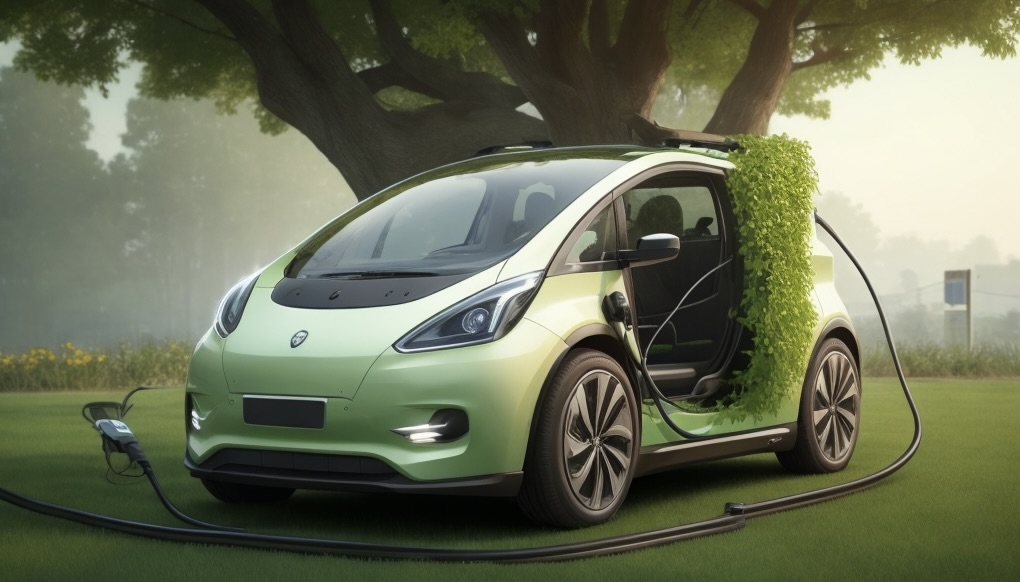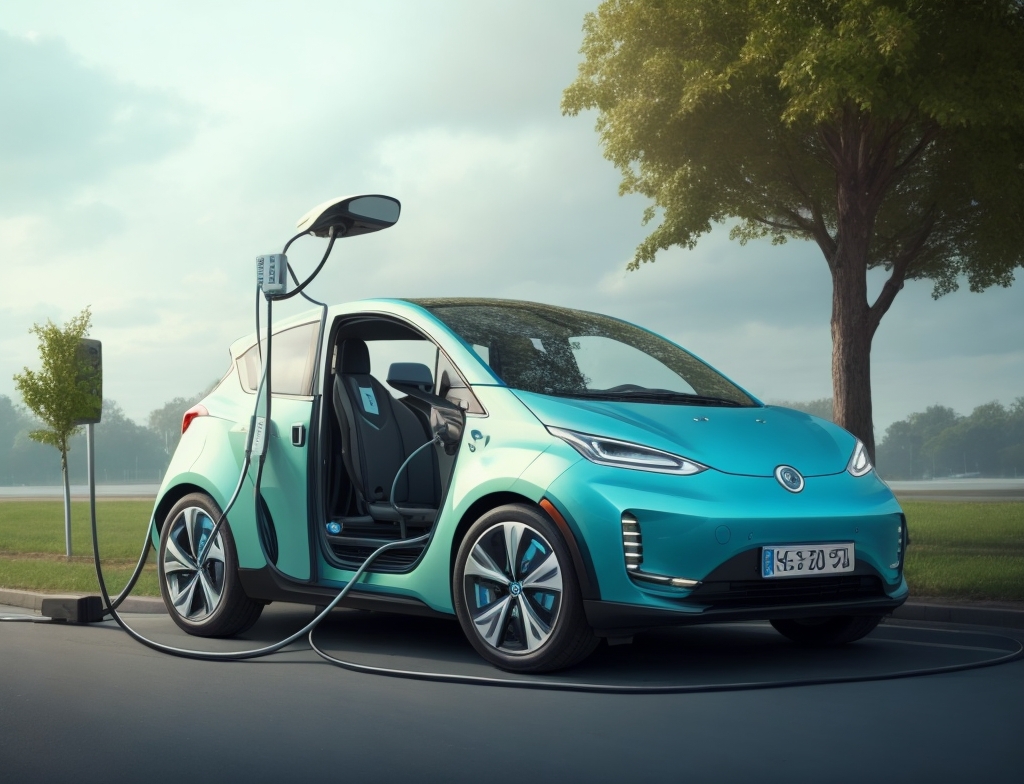
The Rise of Electric Vehicles
The automotive landscape is currently undergoing a rapid and remarkable transformation, driven by the surging popularity of electric vehicles (EVs). This shift is primarily propelled by the pressing need to curtail greenhouse gas emissions and combat the escalating concerns of climate change. EVs, distinguished by their remarkable attribute of producing zero tailpipe emissions, have emerged as pivotal players in the ongoing battle against air pollution and its far-reaching environmental impacts.
What sets EVs apart is their versatility – from elegant sedans to sturdy SUVs, electric vehicles are transcending traditional categories. Automotive giants, recognizing the significance of this transition, are funneling substantial investments into the development of electric models. This strategic move not only aligns with global emission reduction targets but also reflects a deep commitment to meeting consumer demand for cleaner transportation alternatives.
With each passing year, the EV market witnesses an expansion in options, features, and affordability, making these vehicles accessible to a wider range of consumers. Beyond the environmental benefits, the performance, instant torque, and quiet operation of EVs are redefining the driving experience.
In addition to navigating the evolving transportation landscape, electric vehicles are at the forefront of innovation, symbolizing the transition to sustainable mobility. This transition is not merely a trend; it’s a paradigm shift that addresses not only the immediate concerns of pollution but also the long-term goal of securing a healthier planet for future generations.
The advantages presented by electric vehicles (EVs) go well beyond their evident environmental benefits. To begin with, the efficiency of EVs is nothing short of remarkable. Their electric motors have the distinct capability of converting a notably higher percentage of the energy drawn from the grid into direct power at the wheels, a feat not easily achieved by internal combustion engines. This inherent efficiency leads to reduced energy consumption, resulting in substantial cost savings for EV users over time.
The maintenance landscape for EVs differs significantly from that of traditional vehicles. This distinction is rooted in the simplified mechanics of electric propulsion, characterized by fewer moving parts. Unlike their conventional counterparts, EVs do away with complex components like internal combustion engines, transmissions, and exhaust systems. As a result, maintenance requirements are notably simpler and cheaper, minimizing the need for activities such as oil changes and other conventional services that often contribute to higher maintenance costs in traditional vehicles.
The advantages of electric vehicles encompass economic gains, environmental stewardship, and a streamlined ownership experience. As technology advances and the infrastructure supporting electric vehicles expands, these benefits are expected to become even more prominent, making the transition to electric mobility an increasingly attractive proposition for consumers worldwide.
Charging Infrastructure Revolution
The pivotal success of electric vehicles is intrinsically linked to the existence of a robust and well-established charging infrastructure. In recent times, considerable advancements have been witnessed in this crucial domain. Charging stations are experiencing a surge in both prevalence and accessibility, alongside notable improvements in charging speed. The emergence of superchargers represents a significant milestone, allowing electric vehicles to achieve a substantial charge percentage within a matter of minutes. This development not only bolsters the practicality of daily commuting but also elevates the viability of embarking on long-distance journeys with confidence.
The evolution of charging technology is effectively addressing one of the initial apprehensions that potential electric vehicle buyers had – the concern about running out of charge during their journeys. The growing network of charging stations, coupled with the enhanced efficiency of the charging process itself, is dispelling range anxiety and reshaping the narrative surrounding electric vehicles.
As this charging infrastructure revolution continues, the barrier to entry for electric mobility is lowered, attracting a broader segment of consumers who can now envision electric vehicles as a convenient and reliable mode of transportation. This shift is not only advancing the adoption of electric vehicles but also heralding a new era of mobility that’s characterized by convenience, accessibility, and a reduced carbon footprint.
Clean Transportation Ecosystem
Electric vehicles are central to the wider clean transportation ecosystem. Yet, the transition isn’t limited to passenger cars; commercial vehicles like buses and trucks are also embracing electrification. This shift has the power to notably cut emissions in urban zones, where pollution often reaches critical levels. Additionally, the incorporation of renewable energy sources like solar panels to fuel charging stations amplifies the environmental advantages of EVs.
Challenges to Overcome
Undoubtedly, the promising future of electric vehicles is accompanied by a set of challenges that require strategic solutions. One of these challenges, prominently recognized, is the persistent specter of range anxiety. This term encapsulates the apprehension that electric vehicle drivers feel about being unable to locate a charging station at the right time. While the charging infrastructure is undergoing significant enhancements, it’s understandable that some consumers still harbor concerns regarding the ease of charging in comparison to the swift refueling process observed in gasoline-powered vehicles.
Additionally, the initial cost of electric vehicles can be a deterrent for potential buyers. While the long-term economic advantages of EVs, such as reduced operational costs and minimized reliance on fossil fuels, are evident, the upfront investment can be relatively higher. However, this financial hurdle is being addressed through a combination of evolving market dynamics and supportive governmental policies. Governments around the world are offering incentives, tax rebates, and subsidies to incentivize the adoption of electric vehicles. Moreover, the ongoing advancements in battery technology are gradually leading to decreased production costs, contributing to the mitigation of this challenge over time.
As the electric vehicle industry progresses, these challenges are expected to diminish in significance, thanks to a concerted effort from manufacturers, governments, and technology developers. By addressing range anxiety, improving charging convenience, and continuing to drive down costs, the electric vehicle sector is poised to thrive in the coming years, ushering in an era of cleaner, sustainable transportation on a global scale.
Government Policies and Incentives
The global advancement of the electric vehicle industry owes considerable debt to the active involvement of governments across the world. Through a combination of strategic subsidies, enticing tax incentives, and the implementation of stringent emissions regulations, governments are serving as pivotal catalysts in motivating consumers to embrace electric mobility. These policies resonate with an overarching commitment to pave the way for a sustainable future while also addressing immediate environmental concerns.
By offering financial incentives such as rebates, tax credits, and reduced registration fees, governments are effectively reducing the financial barriers associated with electric vehicle adoption. This approach not only makes electric vehicles more financially attainable for a broader range of consumers but also stimulates market demand, prompting manufacturers to further invest in electric vehicle technology and infrastructure.
Moreover, the enforcement of stringent emissions regulations underscores the determination to reduce the carbon footprint of transportation. By setting emission targets and imposing fines for non-compliance, governments are compelling automakers to prioritize the development and production of electric vehicles.
Innovation and Future Trends
The future of electric vehicles and clean transportation is brimming with innovation. Battery technology is advancing rapidly, leading to improved energy density and longer ranges. Autonomous driving features are also being integrated into electric vehicles, promising safer and more efficient commutes. Moreover, the concept of vehicle-to-grid technology is emerging, allowing EVs to feed energy back into the grid during peak demand, enhancing the overall stability of the power infrastructure.

